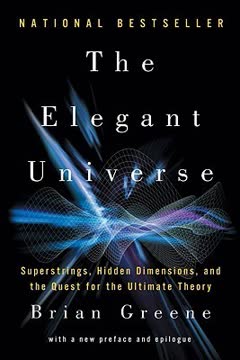つの重要なポイント
1. 宇宙:広大で、熱く、密度が高く、想像以上に異質
宇宙について考えるすべてのことは、実際よりも異質ではない。
宇宙のスケール。 宇宙は人間の直感を超えるスケールで動作します。亜原子から銀河系まで、関与する数値は驚異的です。例えば、観測可能な宇宙には約10^22個の星があり、数百億の銀河に広がっています。
自然の極限。 宇宙は物理学の理解を挑戦する密度と温度の極限を示します。銀河間空間のほぼ完全な真空から、中性子星の想像を絶する密度(100百万頭の象をリップクリームのケースに詰め込むのと同等)まで、宇宙は驚異的な物理的条件の範囲を持っています。同様に、温度は恒星のコアの激しい熱(太陽では1500万K)から、冷たい宇宙マイクロ波背景放射(2.7K)まで変動します。
2. 太陽系:惑星と天体の宇宙のダンス
冥王星は最大の既知のカイパーベルト天体です。それは理にかなっています。新しい種の最初に発見された天体として、それが最大で最も明るいことが予想されます。
惑星の多様性。 私たちの太陽系は、以下のような惑星の多様性を示しています:
- 岩石惑星(水星、金星、地球、火星)
- ガス巨星(木星、土星、天王星、海王星)
- 準惑星(例:冥王星、エリス)
- 無数の小天体(小惑星、彗星、カイパーベルト天体)
動的な歴史。 太陽系の現在の構成は、形成と進化の複雑な歴史の結果です。重要な出来事には以下が含まれます:
- 太陽星雲の初期凝縮
- 惑星の形成と移動
- 小惑星衝突や彗星活動などの継続的なプロセス
- 冥王星の発見と再分類、太陽系の構造に対する理解の進化を強調
3. 恒星:宇宙の炉のライフサイクル
恒星はエネルギーを作り出すビジネスに従事しています。
恒星進化。 恒星は主に初期質量によって決定される予測可能なライフサイクルをたどります:
- ガス雲の崩壊からの形成
- 主系列段階(水素融合)
- 主系列後の進化(例:赤色巨星段階)
- 終末状態:白色矮星、中性子星、またはブラックホール
宇宙の錬金術。 恒星は重元素を作り出す宇宙の工場です:
- 恒星コアでの水素とヘリウムの融合
- 大質量星での鉄までの元素の生成
- 超新星や中性子星の衝突での重元素の生成
この恒星核合成のプロセスは、私たちが知っている生命に必要な元素を作り出す責任があります。
4. 地球外生命の探求:可能性と確率
ドレイク方程式は、主題に関する知識(または無知)を整理する方法です。
居住可能な条件。 地球外生命の探求は、潜在的に居住可能な環境の特定に焦点を当てています:
- 恒星の「ゴルディロックスゾーン」にある惑星
- 液体の水の存在
- 安定した大気とエネルギー源
ドレイク方程式。 この方程式は、銀河内の通信可能な文明の数を推定するのに役立ちます。考慮される要因には以下が含まれます:
- 恒星形成の速度
- 惑星を持つ恒星の割合
- 生命をサポートできる惑星の割合
- 知性と技術を進化させる生命の確率
方程式の変数は非常に不確実ですが、地球外知性の可能性について議論するための枠組みを提供し、探求の努力を導きます。
5. 銀河系:私たちの銀河の家とその超大質量ブラックホール
銀河系の中心には、中性子星が1秒間に30回の速さで回転しています。
銀河の構造。 銀河系は棒渦巻銀河であり、以下を含みます:
- 1000億から4000億の星
- 星間ガスと塵
- ダークマターハロー
- 超大質量ブラックホールを含む中心バルジ
銀河中心。 私たちの銀河の中心には、約400万太陽質量の超大質量ブラックホール、いて座A*が存在します。その存在は以下から推測されます:
- 近くの星の軌道
- 電波および赤外線観測
- 周囲の物質への重力効果
この中心ブラックホールは現在は静かですが、銀河の進化と構造の形成に重要な役割を果たしてきた可能性があります。
6. 膨張する宇宙:ビッグバンからダークエネルギーまで
宇宙が負の曲率または正の曲率を持っていたとしても、最も単純なモデルでのインフレーションは、観測可能な部分よりもはるかに大きな宇宙を生み出すのに十分な膨張をもたらすでしょう。
宇宙の膨張。 宇宙は膨張しており、以下の証拠があります:
- 遠方銀河の赤方偏移(ハッブルの法則)
- 宇宙マイクロ波背景放射
- 宇宙の大規模構造
ダークエネルギー。 宇宙の膨張は加速しており、ダークエネルギーと呼ばれる神秘的な力によって駆動されています:
- 宇宙のエネルギー内容の約68%を占める
- アインシュタインの方程式で宇宙定数のように振る舞う
- 宇宙の最終的な運命を決定する可能性がある(継続的な膨張対潜在的な崩壊)
ダークエネルギーの理解は現代宇宙論の最大の課題の一つであり、宇宙の未来に深い影響を与えます。
7. インフレーションとマルチバース:宇宙の誕生と多重性の可能性
インフレーションは、私たちが見る宇宙の構造を説明するのに非常に成功しています。
宇宙インフレーション。 インフレーション理論は、初期宇宙が急速な指数関数的膨張の期間を経たことを提案します:
- 宇宙マイクロ波背景放射の均一性を説明
- 空間の「平坦さ」を説明
- 原始密度揺らぎを生成するメカニズムを提供
マルチバース仮説。 インフレーションは自然にマルチバースの概念を導きます:
- 永遠のインフレーションがバブル宇宙を生成
- 各バブルが異なる物理法則を持つ可能性
- 私たちの観測可能な宇宙は無限の領域の一つに過ぎない
投機的ではありますが、マルチバースの概念は初期宇宙物理学の最良の理解から生じ、現実の本質に関する基本的な質問に対処するための枠組みを提供します。
8. 宇宙における人類の未来:予測と可能性
知的種が通常銀河を植民地化すると考えるなら、自問してみてください—なぜ私は宇宙植民者ではないのか?
コペルニクス原理の適用。 コペルニクス原理を使用して、私たちの種の将来の寿命を推定できます:
- ホモ・サピエンスがさらに5100年から780万年続く95%の信頼性
- 無線通信文明の平均寿命の上限:12000年
宇宙的な挑戦。 人類は多くの存在リスクと長期的な挑戦に直面しています:
- 自然災害(例:小惑星衝突、スーパー火山)
- 自己誘発的な災害(例:気候変動、核戦争)
- 宇宙的な出来事(例:近くの超新星、ガンマ線バースト)
私たちの長期的な生存は、多惑星種になる能力に依存するかもしれませんが、コペルニクス原理は広範な銀河植民地化がありそうにないことを示唆しています。宇宙における人類の未来は、私たちの選択と宇宙の基本法則によって形作られる未解決の問題です。
最終更新日:
FAQ
What's "A Brief Welcome to the Universe: A Pocket-Sized Tour" about?
- Overview: The book is a condensed version of the larger work "Welcome to the Universe: An Astrophysical Tour," offering a concise exploration of the universe's vastness and complexity.
- Authors: Written by Neil deGrasse Tyson, Michael A. Strauss, and J. Richard Gott, it aims to make astrophysics accessible to a broader audience.
- Content: It covers topics such as the size and scale of the universe, the life cycles of stars, the search for extraterrestrial life, and the future of the universe.
- Purpose: The book serves as an introduction to astrophysics, designed to stimulate curiosity and encourage further exploration of cosmic phenomena.
Why should I read "A Brief Welcome to the Universe"?
- Accessible Science: The book simplifies complex astrophysical concepts, making them understandable for readers without a scientific background.
- Engaging Writing: The authors use humor and relatable analogies to explain the universe's mysteries, making the learning process enjoyable.
- Comprehensive Overview: It provides a broad overview of key topics in astrophysics, from the Big Bang to the potential for life beyond Earth.
- Inspiration for Further Study: The book is designed to pique interest and inspire readers to delve deeper into the field of astrophysics.
What are the key takeaways of "A Brief Welcome to the Universe"?
- Vastness of the Universe: The universe is far larger and more complex than most people realize, with billions of galaxies and stars.
- Life Cycles of Stars: Stars have life cycles that include stages like red giants and supernovae, contributing to the universe's chemical diversity.
- Search for Extraterrestrial Life: The book discusses the conditions necessary for life and the ongoing search for life beyond Earth.
- Future of the Universe: It explores theories about the universe's future, including the potential for continued expansion and the concept of a multiverse.
How do the authors explain the size and scale of the universe?
- Numerical Comparisons: The authors use relatable comparisons, like stacking hamburgers to the Moon, to convey the vast numbers involved in cosmic scales.
- Exponential Notation: They introduce exponential notation to help readers grasp the immense distances and quantities in the universe.
- Cosmic Timeline: A timeline analogy is used to illustrate the universe's age and the relative brevity of human existence.
- Visual Imagery: The book employs vivid imagery to help readers visualize the universe's scale, from atoms to galaxies.
What is the significance of the Hertzsprung-Russell diagram in the book?
- Star Classification: The HR diagram is used to classify stars based on their luminosity and temperature, helping to understand their life cycles.
- Main Sequence: It highlights the main sequence, where most stars, including the Sun, spend the majority of their lifetimes.
- Star Evolution: The diagram illustrates the evolutionary paths of stars, from their birth to their eventual demise as white dwarfs or supernovae.
- Educational Tool: The HR diagram serves as a foundational tool for understanding stellar properties and behaviors.
How does the book address the search for extraterrestrial life?
- Habitable Zones: The authors discuss the concept of habitable zones around stars where conditions might support liquid water and life.
- Drake Equation: They introduce the Drake Equation as a framework for estimating the number of communicative civilizations in the galaxy.
- Exoplanet Discoveries: The book highlights recent discoveries of exoplanets and their potential to host life.
- Challenges and Possibilities: It explores the challenges of detecting extraterrestrial life and the possibilities of finding life forms different from those on Earth.
What are the authors' views on the future of the universe?
- Continued Expansion: The book discusses the theory that the universe will continue to expand, potentially leading to a "Big Freeze."
- Dark Energy: It examines the role of dark energy in driving the universe's accelerated expansion.
- Multiverse Theory: The authors explore the concept of a multiverse, where our universe is just one of many.
- Human Perspective: They reflect on humanity's place in the universe and the potential for future exploration and discovery.
What role does dark matter play in the universe according to the book?
- Invisible Mass: Dark matter is described as an invisible substance that makes up most of the universe's mass.
- Gravitational Effects: Its presence is inferred from gravitational effects on visible matter, such as the rotation of galaxies.
- Unidentified Particles: The book suggests that dark matter may consist of yet-to-be-discovered elementary particles.
- Cosmic Structure: Dark matter is crucial for understanding the large-scale structure of the universe and galaxy formation.
How do the authors explain the concept of inflation in the universe?
- Rapid Expansion: Inflation refers to a period of rapid expansion in the early universe, solving the problem of its uniformity.
- Quantum Fluctuations: The authors discuss how inflation stretched quantum fluctuations to cosmic scales, seeding galaxy formation.
- Theoretical Models: They explore various models of inflation, including the idea of a multiverse with multiple bubble universes.
- Empirical Evidence: The book highlights observational evidence supporting inflation, such as the cosmic microwave background.
What are some of the best quotes from "A Brief Welcome to the Universe" and what do they mean?
- "The universe is hard enough, so there is no point in making big words to confuse you further." This quote emphasizes the authors' commitment to making complex topics accessible and understandable.
- "We are a simple people, with a monosyllabic lexicon." Reflecting on the straightforward naming conventions in astrophysics, this quote highlights the field's focus on clarity and simplicity.
- "The universe. It’s bigger than you think. It’s hotter than you think. It is denser than you think." This quote underscores the book's central theme of challenging readers' perceptions of the universe's vastness and complexity.
- "And so the cosmos ends. Not in fire, but in ice. And not with a bang, but with a whimper." This poetic reflection on the universe's potential fate captures the authors' exploration of cosmic theories and the ultimate destiny of the universe.
How do the authors use humor and analogies to explain complex concepts?
- Relatable Comparisons: The authors use everyday analogies, like McDonald's hamburgers, to make large numbers and cosmic distances relatable.
- Humorous Insights: They incorporate humor to engage readers and make the learning process enjoyable, such as joking about cows fearing McDonald's.
- Simplifying Complexity: By breaking down complex ideas into simple, digestible parts, the authors make astrophysics accessible to a wider audience.
- Engaging Storytelling: The book's narrative style combines scientific rigor with entertaining storytelling, keeping readers interested and informed.
What is the significance of the Drake Equation in the book?
- Framework for Estimation: The Drake Equation provides a framework for estimating the number of communicative civilizations in the galaxy.
- Organizing Knowledge: It helps organize our knowledge and ignorance about the factors influencing the development of intelligent life.
- Encouraging Exploration: The equation encourages scientific exploration and discussion about the possibilities of extraterrestrial life.
- Highlighting Uncertainties: By examining each term in the equation, the authors highlight the uncertainties and challenges in the search for alien life.
レビュー
本書『宇宙への簡潔な案内』は、主に好意的な評価を受けており、平均評価は5点中4.04点である。読者は複雑なテーマに対する分かりやすいアプローチを評価しているが、一部の読者は特定のセクションが難しいと感じることもある。本書は明快な説明、魅力的な文体、そして宇宙に対する畏敬の念を喚起する能力で称賛されている。しかし、いくつかのレビューでは、上級者には基本的すぎるか、完全な初心者には複雑すぎるかもしれないと指摘されている。総じて、本書は天体物理学と天文学の良い入門書と見なされている。
Similar Books














